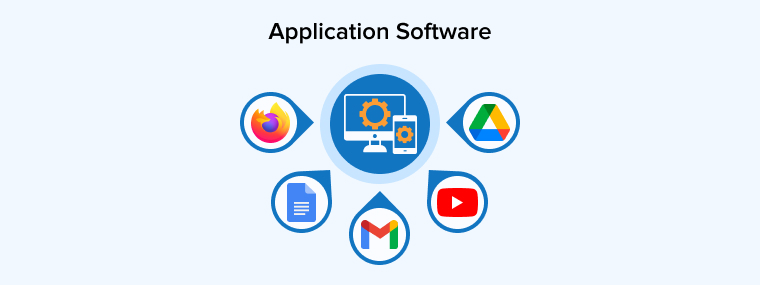Introduction
In today’s fast-paced business environment, recruitment efficiency is more important than ever. Companies must attract, engage, and hire top talent quickly and effectively to stay competitive. A well-optimized recruitment funnel ensures that candidates move seamlessly through the hiring process, reducing time-to-hire and improving the overall quality of hires. Leveraging technology, such as Applicant Tracking Software (ATS) and Applicant Tracking System (ATS), can significantly enhance this process by automating tasks, providing real-time insights, and ensuring a data-driven approach.
1. Understanding the Recruitment Funnel
A recruitment funnel is the step-by-step process that companies use to attract, evaluate, and hire candidates. It begins with attracting candidates and ends with making a job offer. Each stage of the funnel must be optimized for efficiency to ensure that you not only attract top talent but also make the right hiring decisions in a timely manner.
Key stages of the recruitment funnel include:
- Attraction: Drawing the right candidates to your job postings.
- Engagement: Interacting with and maintaining interest among potential candidates.
- Evaluation: Assessing the qualifications, skills, and cultural fit of candidates.
- Selection: Deciding which candidate best fits the role and extending an offer.
2. The Role of Applicant Tracking Software in Optimizing the Recruitment Funnel
Applicant Tracking Software (ATS) is essential for optimizing the recruitment funnel. An ATS helps streamline each stage of the process, from sourcing candidates to tracking applicant progress, making it easier for recruiters to manage high volumes of applications efficiently.
a. Centralized Candidate Data
With an ATS, all candidate information is stored in one place. This centralization allows recruiters to access resumes, application details, and communication history at any time, ensuring a more organized and efficient recruitment process.
b. Automated Communication
Maintaining consistent communication with candidates is vital for keeping them engaged throughout the recruitment process. An ATS automates communications, such as follow-up emails and status updates, ensuring that candidates are informed and engaged without burdening recruiters with repetitive tasks.
c. Real-Time Reporting and Analytics
An ATS provides real-time reporting and analytics on the recruitment funnel, allowing you to track where candidates are dropping off and identify bottlenecks. This data-driven insight helps recruiters make adjustments to improve the overall efficiency of the funnel.
d. Improved Collaboration
With Applicant Tracking Systems, hiring managers and recruiters can collaborate easily by sharing candidate evaluations, comments, and feedback within the platform. This speeds up decision-making and ensures that everyone involved in the recruitment process is on the same page.
3. Steps to Optimize Your Recruitment Funnel
a. Improve Job Descriptions for Better Attraction
The first stage of the recruitment funnel—attraction—starts with writing clear and compelling job descriptions. Optimize job postings by including relevant keywords, defining the role accurately, and showcasing your company culture. An ATS can help ensure your job postings are published across multiple platforms and analyzed for effectiveness.
b. Source Candidates Efficiently
Sourcing is a critical part of optimizing your recruitment funnel. Utilize Applicant Tracking Software to source candidates from multiple job boards, social media platforms, and talent pools. AI-powered ATS platforms can even help match the best candidates to your open positions by analyzing their qualifications and experience.
c. Enhance Candidate Screening with Automation
Screening candidates manually can be time-consuming. By using Applicant Tracking Systems, you can automate the screening process through resume parsing, keyword filtering, and pre-employment assessments. This ensures that only the most qualified candidates move forward, saving recruiters time and effort.
d. Streamline Interview Scheduling
Interview scheduling can be a bottleneck in the recruitment funnel if not managed efficiently. Many ATS platforms offer interview scheduling tools that sync with recruiters’ and candidates’ calendars, making it easier to set up interviews without multiple rounds of back-and-forth communication.
e. Leverage Data for Continuous Improvement
Optimizing the recruitment funnel is an ongoing process. Use the data collected by your ATS to analyze key recruitment metrics, such as time-to-hire, candidate drop-off rates, and source effectiveness. Regularly reviewing these metrics allows you to identify areas for improvement and make data-driven decisions to refine your funnel.
4. The Benefits of an Optimized Recruitment Funnel
a. Reduced Time-to-Hire
A well-optimized recruitment funnel minimizes inefficiencies, allowing you to fill open roles faster. By automating key tasks such as screening, communication, and scheduling, Applicant Tracking Software ensures that candidates move through the funnel more quickly, reducing time-to-hire.
b. Improved Candidate Experience
Candidates today expect a fast, transparent, and engaging recruitment process. An optimized funnel ensures that candidates receive timely updates, smooth interview experiences, and clear communication throughout their journey. This positive experience not only attracts top talent but also enhances your employer brand.
c. Higher Quality Hires
Optimizing the recruitment funnel ensures that you’re not just filling roles quickly, but also hiring the right talent. By using data-driven insights, automated screening tools, and structured evaluation processes, you improve the overall quality of your hires, leading to better long-term outcomes for your company.
d. Cost Efficiency
An optimized funnel reduces the overall cost of recruitment by minimizing the time and resources spent on manual tasks. By using an ATS to automate key processes and provide actionable insights, you can reduce the cost per hire and maximize your recruitment ROI.
5. Common Challenges in Recruitment Funnel Optimization and How to Overcome Them
a. High Candidate Drop-Off Rates
One common issue in recruitment funnels is a high drop-off rate, where candidates lose interest or disengage partway through the process. To overcome this, ensure timely and consistent communication through your Applicant Tracking System to keep candidates engaged.
b. Lack of Candidate Engagement
Engagement is key to moving candidates through the funnel effectively. Use an ATS to send personalized messages and schedule touchpoints throughout the process to keep candidates interested. Consider implementing AI chatbots within your ATS to provide real-time assistance and answer candidates’ queries.
c. Slow Decision-Making
Slow decision-making can frustrate candidates and lead to missed opportunities with top talent. Collaborative tools in an ATS allow hiring teams to share feedback, make faster evaluations, and expedite hiring decisions, ensuring that you don’t lose out on quality candidates due to delays.
6. Conclusion
Optimizing your recruitment funnel is essential for improving efficiency, reducing time-to-hire, and enhancing the candidate experience. Leveraging technology such as Applicant Tracking Software (ATS) and Applicant Tracking Systems (ATS) is key to achieving these goals. By automating repetitive tasks, streamlining communication, and providing data-driven insights, an ATS empowers recruitment teams to optimize their funnel for better results. In a competitive job market, an optimized recruitment funnel can make all the difference in attracting and securing top talent while improving your company’s overall recruitment performance.



